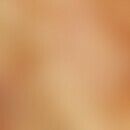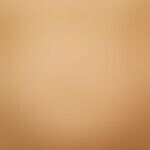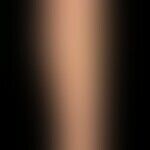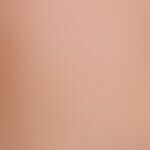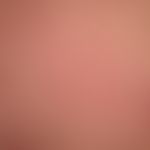Synonym(s)
HistoryThis section has been translated automatically.
DefinitionThis section has been translated automatically.
Chronic eczema due to extremely dry skin with sebostasis, especially in older patients, incorrect or excessive personal hygiene or as a side effect of medication (see below , adverse drug reactions).
You might also be interested in
Occurrence/EpidemiologyThis section has been translated automatically.
No gender bias; the predisposition to "dry skin" is inherited, but generally remains asymptomatic or does not require treatment in the first decades of life.
The need for treatment only arises in the second half of life in those who are predisposed to it. In this case, an increasing, age-induced skin dryness meets an additional drying washing ritual which has been "trained" since early youth, with whole-body soaping and use of liquid soaps or syndets.
Long-lasting and hot baths increase the drying effect on the skin.
Affected by an increased, trickling otherwise little symptomatic scaling, are here first lower legs and forearms, later also the body trunk.
The increasing dehydration of the integument can then become symptomatic with an unpleasant feeling of tension and also itching - "one no longer feels comfortable in one's skin".
EtiopathogenesisThis section has been translated automatically.
Dehydration or destruction of the natural skin protection, e.g. after excessive use of soaps or shower gels in daily personal hygiene. More rarely caused by malnutrition, vulgar ichthyosis, anorexia nervosa, underlying neurological diseases (e.g. alcohol abuse) or after systemic drug therapies (e.g. isotretinoin, indinavir, bevacizumab). The risk of eczema is increased by around 30%, particularly in older people who take antihypertensive medication (Ye et al. 2024). There is a further, albeit lower, risk for ACE inhibitors and beta-blockers.
The finding of exsiccation dermatitis can also manifest itself in hypoesthetic skin (regardless of the age of the person affected and the therapeutic measures used) (Cassler NM et al. 2014).
ManifestationThis section has been translated automatically.
Mostly occurring in older men after the age of 60. Also occurring in younger people, e.g. due to the use of skin-desiccating drugs such as isotretinoin or long-term use of diuretics or antihypertensives (the highest risk is associated with calcium channel blockers (Ye M et al. 2024). Furthermore, atopic patients or patients with ichthyosis suffer from dry skin, which can also lead to dehydration of the integument if no therapeutic measures are taken. The signs of desiccation usually worsen in winter or become manifest during this time of year.
LocalizationThis section has been translated automatically.
ClinicThis section has been translated automatically.
Dry, extensive, itchy to varying degrees, occasionally also painful, partly finely lamellar, partly also coarsely lamellar scaling, skin-colored, in places also reddened plaques. In some areas, yellow-brownish, ophthalmic, keratotic, blanched deposits form. The exsiccated horny layer is prone to superficial, reticulated patterned superficial tears, but also deeper fissures running in the tension lines of the skin. Itching often occurs. Thus, scratch excoriations or superficial hemorrhages are also found. Occasionally dysesthesia.
The appearance of the skin is reminiscent of a dried riverbed with deep tears or cracked porcelain and is more pronounced during the winter months than in the warm season. As the disease progresses, layered, coin-shaped, reddish-brown, scaly, infiltrated plaques develop.
Differential diagnosisThis section has been translated automatically.
Exiccation eczema must be distinguished from:
- Congestive dermatitis (exclusion of chronic venous insufficiency)r
- Nummular dermatitis (microbial eczema); chronic nummular plaques!
- Allergic or toxic contact dermatitis (medical history)
- Scabies
- Paradoxical eczema due to the use of biologics. In a meta-analytical study, the adjusted incidence rates were 1.22 per 100,000 person-years for IL-17 inhibitors, 0.94 per 100,000 person-years for TNF inhibitors, 0.80 per 100,000 person-years for IL-12/23 inhibitors and 0.56 per 100,000 person-years for IL-23 inhibitors (Al-Janabi A et al. 2024).
General therapyThis section has been translated automatically.
External therapyThis section has been translated automatically.
Regrease the skin with externals such as base cream (DAC), Eucerin cum aq., ash base cream, Linola milk. Extremely sparing use of cleansing agents like syndets or soaps. Instead, mild cleansing of the body skin with hydrophilic body oils. This achieves a sufficient cleansing effect while at the same time providing a regreasing body care. Instead of hydrophilic oils also O/W emulsions can be used, e.g. base lotion or commercial emulsions like Abitima body lotion, Excipial U Hydrolotio, Sebamed lotion. Briefly shower off the skin, apply and spread the emulsion on the moist skin, briefly shower off again, the remaining emulsion film is not perceived as unpleasant. Oil baths such as the"Cleopatra Bath", Cordes Oil Bath, Linola Fat N Oil Bath, Balneum Hermal Oil Bath also have a soothing and refatting effect on the skin.)
Helpful and well tolerated are usually also 2-10% urea preparations (Excipial U Lipolotio, Basodexan Softcreme/Fettcreme, Linola Urea Creme, Nubral Creme or as a formulation: urea-cetomacrogolsalbe 10% or urea 5% in Unguentum emulsificans aquosum). Alternatively: ointments containing dexpanthenol e.g. R065).
In severe cases and in case of persistent itching, apply weakly to moderately potent glucocorticoid-containing topical preparations for a short time (e.g. Laticort® cream/ointment, Linola® H fat, Advantan® ointment/ointment, Dermatop® ointment/ointment).
Internal therapyThis section has been translated automatically.
Phytotherapy externalThis section has been translated automatically.
see also under Phytotherapy atopic dermatitis
Positive monograph: Evening primrose oil
Note(s)This section has been translated automatically.
A distinction must be made between congenital skin desiccation and analogous exsiccation patterns, pseudoichthyosis or ichthyosis acquisita, which occur in terminal tumor diseases, frail old people, people on dialysis, HIV-infected people and after taking certain medications (lipid-lowering drugs, psychotropic drugs, cimetidine, clofazimine; isotretinoin, indinavir, bevacizumab).
Ye M et al. (2024) Antihypertensive Medications and Eczematous Dermatitis in Older Adults. JAMA Dermatol 160: 710-716.
LiteratureThis section has been translated automatically.
- Akimoto K et al. (1993) Quantitative analysis of stratum corneum lipids in xerosis and asteatotic eczema. J Dermatol 20: 1-6
Al-Janabi A et al. (2024) Risk of Paradoxical Eczema in Patients Receiving Biologics for Psoriasis. JAMA Dermatol 160:71-79
- Bhushan M et al. (2001) Eczema craquele resulting from acute oedema: a report of seven cases. Br J Dermatol 145: 355-357
- Brocq LAJ (1907) Traité élémentaire de dermatologie pratique comprenant les syphilides cutanées. Octave Douin (Paris)
- Calista D, Boschini A (2000) Cutaneous side effects induced by indinavir. Eur J Dermatol 10: 292-296
- Cassler NM et al. (2014) Asteatotic eczema in hypoesthetic skin: a case series. JAMA Dermatol 150(10):1088-1090.
- Ishiguro N et al. (2001) Linear erythema craquele due to acute oedema in anorexia nervosa. Br J Dermatol 145: 357-359
- Norman RA (2003) Xerosis and pruritus in the elderly: recognition and management. Dermatol Ther 16: 254-259
- Specht S et al (2021) Asteatotic eczema. StatPearls [Internet]. Treasure Island (FL): StatPearls Publishing; PMID: 31747214.
- Ye M et al. (2024) Antihypertensive Medications and Eczematous Dermatitis in Older Adults. JAMA Dermatol 160: 710-716.
- Yu RJ et al. (2001) Objective bioengineering methods to assess the effects of moisturizers on xerotic leg skin of elderly people. Dermatolog Treat 12: 181
Incoming links (22)
Alcohol skin changes; Asteatosis cutis; Atrophy senile of the skin; Bevacizumab; Cannabidiol ; Cleopatra bath; Dehydration eczema; Dermatitis cruris pustulosa et atrophicans; Desiccation eczematide; Dexpanthenol cream hydrophobic 5% (nrf 11.29.); ... Show allOutgoing links (25)
Ace inhibitors; Adverse drug reactions of the skin; Antihistamines, systemic; Atopic dermatitis (overview); Bevacizumab; Biologics in dermatology; Cleopatra bath; Congestive dermatitis; Contact dermatitis (overview); Desloratadine; ... Show allDisclaimer
Please ask your physician for a reliable diagnosis. This website is only meant as a reference.

